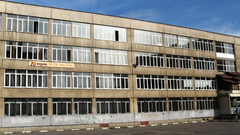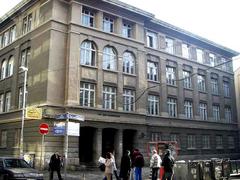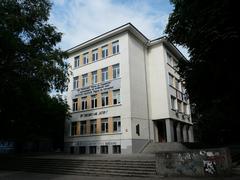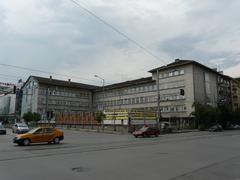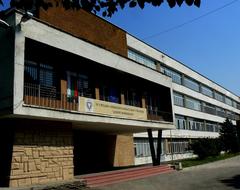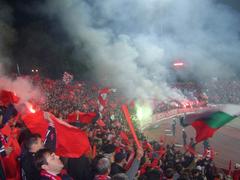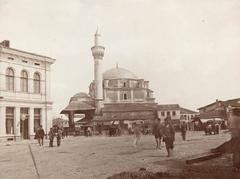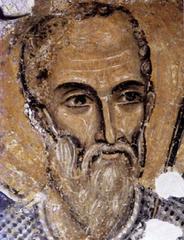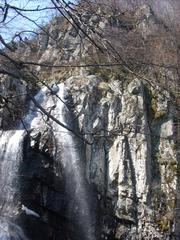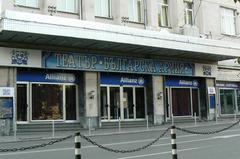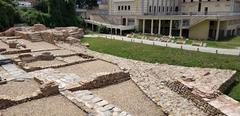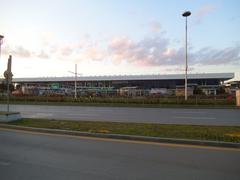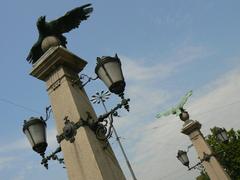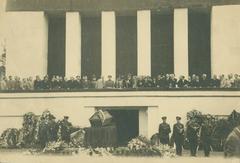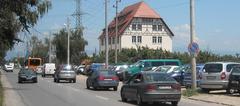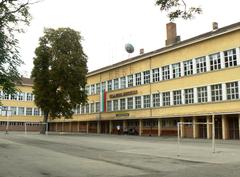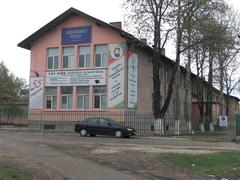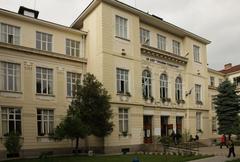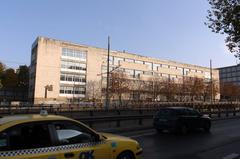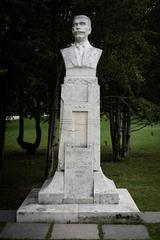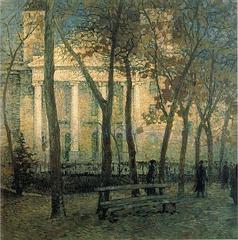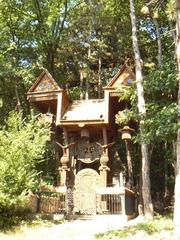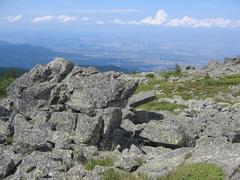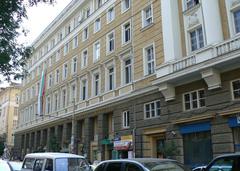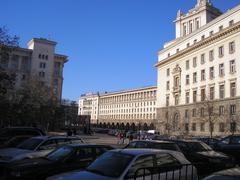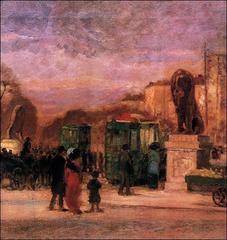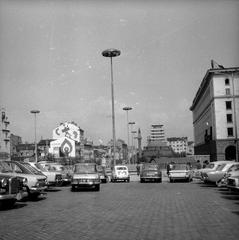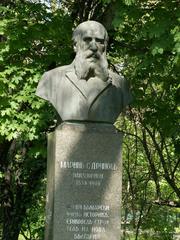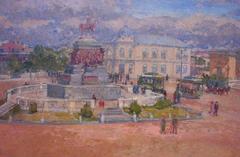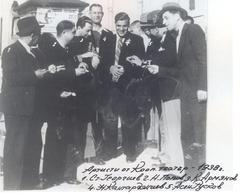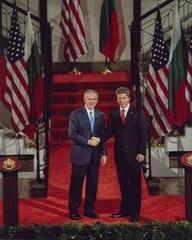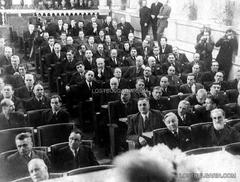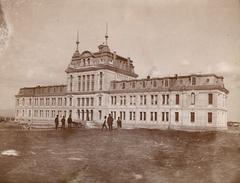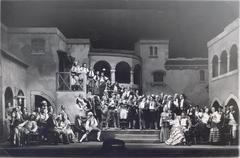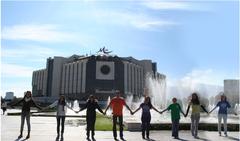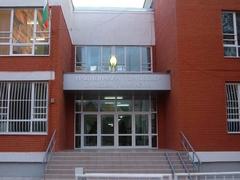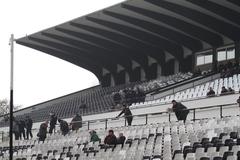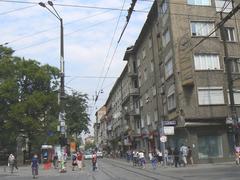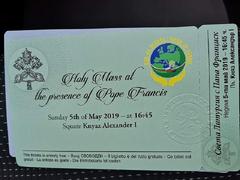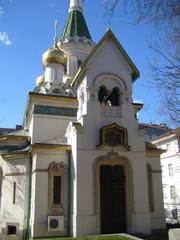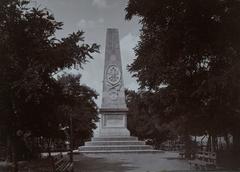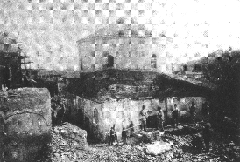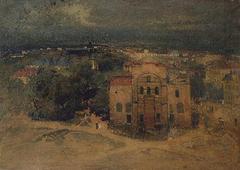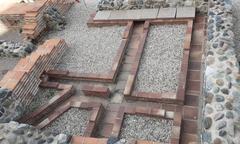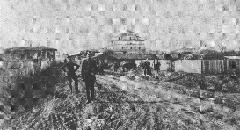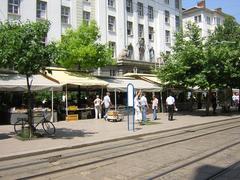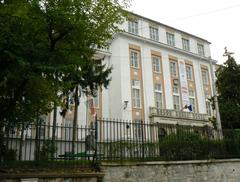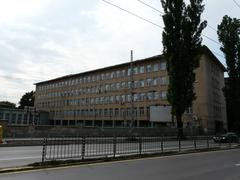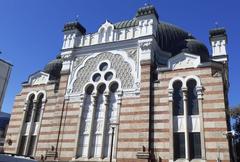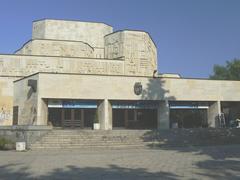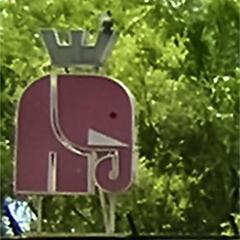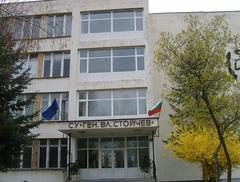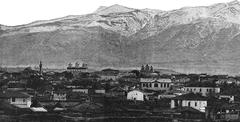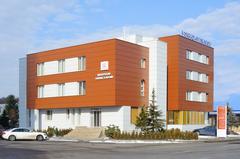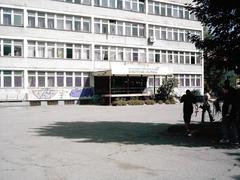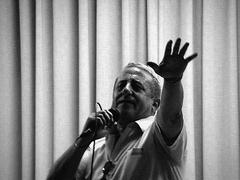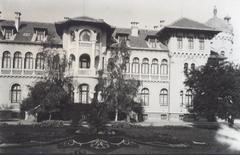
Saint Paraskeva Church Sofia: Visiting Hours, Tickets, and Historical Sites Guide
Date: 04/07/2025
Introduction
Saint Paraskeva Church in Sofia, Bulgaria, is a distinguished emblem of the city’s spiritual heritage, architectural creativity, and cultural richness. From its medieval origins to its 20th-century architectural innovations, it stands as a testament to Bulgarian Orthodox faith and history. This comprehensive guide explores the church’s deep-rooted significance, architectural highlights, artistic treasures, and practical information, offering everything visitors need to plan a meaningful visit. Nearby, the rural Church of St. Paraskeva-Petka Tarnovska in Negushevo further enriches the legacy, showcasing Bulgaria’s resilient religious traditions (Free Sofia Tour, Roundtrip Bulgaria).
Table of Contents
- Origins and Dedication
- Architectural Evolution and Archaeological Significance
- Artistic Heritage: Murals and Iconography
- Role as a Guild Church
- Legends and National Significance
- Visitor Information: Hours, Tickets, and Accessibility
- Nearby Attractions and Travel Tips
- Community and Religious Life
- Architectural Features of St Paraskeva on Georgi Rakovski Street
- Visitor Info: Georgi Rakovski Street Church
- Historical and Spiritual Context: Negushevo Church
- Negushevo Church: Features and Practices
- Pilgrimage and Visitor Experience
- Preservation and Community Stewardship
- Frequently Asked Questions (FAQ)
- Visual Gallery
- Plan Your Visit
- Summary and Final Tips
- References and Further Reading
Origins and Dedication
Saint Paraskeva Church, often called Saint Petka of the Saddlers (Sveta Petka Samardzhiyska), is dedicated to Saint Paraskeva of Iconium—a Christian martyr renowned for her compassion and unwavering faith during Roman persecution. The church’s title highlights its historical ties to Sofia’s saddlers’ guild, reflecting a blend of spiritual and occupational traditions (Free Sofia Tour).
Architectural Evolution and Archaeological Significance
This church is a single-nave structure with a semi-cylindrical vault and hemispherical apse, constructed atop a Roman crypt unearthed during World War II. Its foundations date to the 11th century, evidencing Sofia’s continuous religious role since antiquity. Despite damage during the Ottoman period and urban changes, careful restoration has preserved much of its medieval character (Free Sofia Tour).
Artistic Heritage: Murals and Iconography
Inside, visitors find exceptional frescoes spanning the 14th–19th centuries, depicting biblical stories and Orthodox saints. These murals chart the evolution of religious art in Bulgaria, from austere medieval styles to later, more vibrant expressions. Conservation efforts have preserved these significant works, cementing the church’s status as a cultural monument.
Role as a Guild Church
Under Ottoman rule, the church became a spiritual refuge for Sofia’s saddlers’ guild. Their support sustained the church through difficult times when Christian institutions faced severe restrictions, making it both a religious and social hub (Free Sofia Tour).
Legends and National Significance
Local legend holds that national hero Vasil Levski is buried in the church crypt, though evidence is lacking. Nevertheless, this association amplifies the church’s symbolic importance and draws pilgrims who wish to honor Levski’s memory.
Visitor Information: Hours, Tickets, and Accessibility
- Visiting Hours: Typically open Monday–Saturday, 9:00 AM–5:00 PM, and Sunday, 9:00 AM–3:00 PM. Hours may change on holidays.
- Tickets: No admission fee.
- Accessibility: Wheelchair access is limited due to medieval architecture; contact local tourism offices for assistance.
- Guided Tours: Available through providers such as Free Sofia Tour.
Nearby Attractions and Travel Tips
The church sits near other major Sofia landmarks, including Sveta Nedelya Cathedral and ancient Roman ruins. Walking tours are recommended for exploring the area. Photography is allowed, but flash and tripods should be avoided to protect artwork.
Community and Religious Life
Beyond its historical and artistic value, the church remains an active worship site, hosting regular services and commemorations. Its dedication to Saint Paraskeva continues to symbolize themes of charity and resilience.
Architectural Features of St Paraskeva on Georgi Rakovski Street
Exterior Design and Layout
Located at 58 Georgi Rakovski Street, this is Sofia’s third-largest church. Designed by Anton Tornyov, its construction began in 1926, with finishing touches completed in 1940. The exterior fuses Orthodox tradition and modernism, with apses and porticos creating a grand yet inviting presence.
Central Dome and Structural Innovations
Its vast column-free dome covers a circular naos over 20 meters wide, made possible by reinforced concrete engineering. The dome’s acoustics enhance choral music, while its open plan offers unobstructed views of the altar.
Interior and Artistic Elements
Master craftsmen and artists, including Professors Stefan Ivanov and Marin Drinov, created the iconostasis and furnishings. Side chapels honor several saints. Natural light from the dome and apses illuminates murals and woodcarvings, while innovative bell placement preserves the church’s silhouette.
Accessibility and Urban Setting
Ramps and spacious interiors make this church more accessible than its medieval counterpart. It’s centrally located, close to the Alexander Nevsky Cathedral and other attractions.
Visitor Info: Georgi Rakovski Street Church
- Hours: Usually open daily, 9:00 AM–6:00 PM; check ahead for holiday variations.
- Admission: Free; donations welcomed.
- Guided Tours: Available on request; special events and concerts are frequent.
- Accessibility: Ramps and accessible entrances; contact the church office for assistance.
- Nearby Attractions: Alexander Nevsky Cathedral, Russian Church, Saint Sofia Church, and local cultural venues.
Historical and Spiritual Context: Negushevo Church
The Church of St. Paraskeva-Petka Tarnovska in Negushevo, built in 1884, is dedicated to a saint celebrated for healing and protection (Roundtrip Bulgaria). It stands as a spiritual anchor in a village with deep historical roots, including links to Thracian, medieval, and Ottoman eras.
Negushevo Church: Features and Practices
This modest, stone-built, single-nave church reflects 19th-century rural Bulgarian craftsmanship. While unadorned compared to urban cathedrals, it’s filled with icons and ritual objects significant to the community. The church is central to village life—hosting liturgies, weddings, funerals, and especially the feast day of St. Paraskeva on October 14th.
Pilgrimage and Visitor Experience
Visitors experience Bulgaria’s heritage in an authentic rural setting. Pilgrims and tourists are welcome, particularly during major feast days, and can participate in local customs, music, and cuisine.
Preservation and Community Stewardship
The Negushevo church’s survival is due to the commitment of local villagers, who maintain and restore the building with traditional techniques. It continues to play a key role in community education and cultural life.
Frequently Asked Questions (FAQ)
Q: What are the visiting hours for Saint Paraskeva Churches?
A: Generally from 9:00 AM to 5:00 or 6:00 PM, depending on the church and day. Check with local sources for holiday variations.
Q: Is there an entrance fee?
A: No, admission is free; donations are appreciated.
Q: Are guided tours available?
A: Yes, through local providers or by arrangement.
Q: Is photography allowed?
A: Yes, except during services; avoid flash and always ask permission.
Q: Are the churches accessible for people with disabilities?
A: Accessibility varies. The modern church is more accessible; older churches may require assistance.
Visual Gallery

![]()
Plan Your Visit
- Check Visiting Hours: Contact Sofia Tourist Information Centers for the current schedule.
- Dress Code: Modest attire (shoulders and knees covered). Remove hats inside.
- Accessibility: Ask for assistance if needed.
- Tours and Guides: Arrange through tourism offices or local guides.
- Nearby Sites: Combine your visit with other Sofia landmarks such as Alexander Nevsky Cathedral and the National Historical Museum.
For additional local guidance and up-to-date information, consult visitsofia.bg, or arrange tours via Free Sofia Tour and Roundtrip Bulgaria.
Summary and Final Tips
Saint Paraskeva Churches in Sofia and Negushevo reflect Bulgaria’s layered history, artistic achievements, and close-knit community spirit. Their architectural diversity—from medieval crypts and frescoes to modern domes—offers visitors deep insight into national identity. Free admission, guided tour options, and central locations make them accessible to all. Respectful attire and photography help preserve their sanctity.
Utilize trusted resources, including Sofia’s Tourist Information Centers and the Audiala app, to enrich your experience. By exploring these churches, you’ll gain a unique perspective on Bulgarian heritage and spirituality (Free Sofia Tour, Roundtrip Bulgaria, visitsofia.bg).
References and Further Reading
- Saint Paraskeva Church in Sofia: History, Visiting Hours, Tickets, and Tips for Visitors, 2025, Free Sofia Tour
- Church of St Paraskeva in Sofia: Architectural Marvel and Visitor Guide, 2025, Free Sofia Tour
- Church of St. Paraskeva-Petka Tarnovska in Negushevo: History, Visiting Hours, Tickets, and Visitor Guide, 2025, Roundtrip Bulgaria
- Saint Paraskeva Church Visiting Hours, Tickets & Sofia Historical Sites Guide, 2025, Visit Sofia
- Saint Paraskeva Church Visiting Hours, Tickets & Sofia Historical Sites Guide, 2025, Wanderlog



